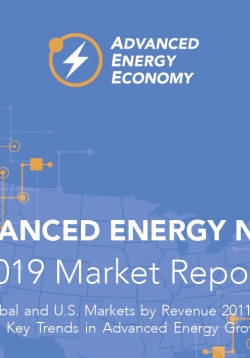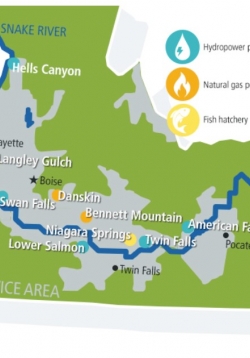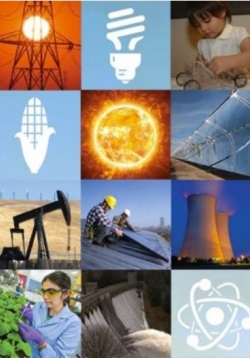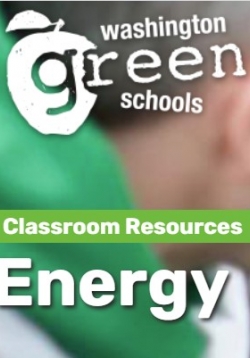
The Advanced Energy Now 2019 Market Report is the sixth report of market size, by revenue, of the advanced energy industry, worldwide and in the United States.

The Advanced Energy Now 2019 Market Report is the sixth report of market size, by revenue, of the advanced energy industry, worldwide and in the United States.
Keeping It Cool With Solar unit asks the question: “How might we design a structure that will keep us cool on a hot day?” As an anchoring phenomenon, students will be shown a time-lapse video of an ice cube melting, and a second phenomenon of a solar...
This unit involves students learning about transferring solar energy to small motors, exploring the center of gravity and testing light sources (including the sun). The culminating engineering design project gives students the chance to pull...

Idaho Power offers tours of hydropower and natural gas generating plants in their territory, as well as of fish hatcheries. Available to any district within Idaho Power Territory. Idaho Power staff will also come to classrooms to make presentations.

Energy Literacy: Essential Principles and Fundamental Concepts for Energy Education is an interdisciplinary approach to teaching and learning about energy. The framework identifies seven Essential Principles and a set of Fundamental Concepts to support each principle. The guide does not seek to identify all areas of energy understanding, but rather to focus on those that are essential for all citizens K-Gray. It presents energy concepts that, if understood and applied, will help individuals and communities make informed energy decisions.

Washington Green Schools guides and supports students and school communities to be leaders for a healthy environment. As part of their efforts to promote sustainable schools, they have developed a series of games and activities to help students understand energy use in their school and engage in conversations about how to reduce their energy use and clean up their sources of energy.
Students will calculate the energy consumption of a set of common household devices based on their operating power rating and then investigate the power consumption of other devices in their homes.

Released in response to President Obama's Clean Power Plan, this analysis and policy platform's goal is "to empower communities working for a Just Transition to a clean energy future by organizing to protect the integrity of the CPP and ensuring Federal and State Implementation Plans adhere to principles of environmental justice." It addresses effects on frontline communities, incorproatin of environmetal justice principles into state and federal energy plans, regulation of carbon and co-pollutant emisisons, policy loopholes to incentivize fossil fuel extraction, clean energy and conservtation, and access to clean energy careers.

This unique program pairs high school science teachers with a mentor doing cutting-edge research in an academic lab or a lab associated with another nonprofit institution. The Murdock Trust awards approximately 25 Partners in Science grants each year to fund these teacher-mentor research opportunities in the Pacific Northwest. Our goal is to help teachers bring knowledge from the research lab directly into the classroom to promote hands-on science education.

Energy by the Numbers focuses on the metrics and data available to track how Oregon produces, purchases, and uses various types of energy. Includes many pages of graphics that highlight oregon's energy usage and production by source and by producer/utility type/sector, location of energy facilities, energy costs, and information on electric vehicles in Oregon.
Bonneville Environmental Foundation
1500 SW 1st Avenue, Suite 710
Portland OR 97201
phone: 503-248-1905